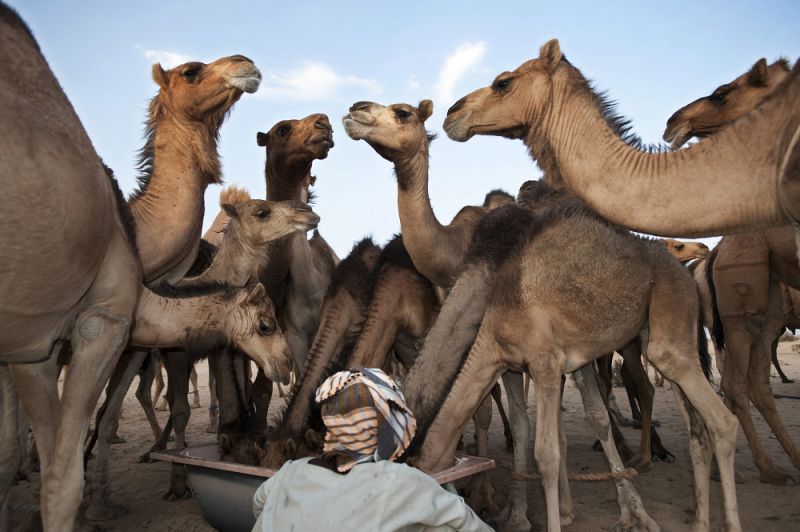By: Rasha Dewedar
Send to a friend
The details you provide on this page will not be used to send unsolicited email, and will not be sold to a 3rd party. See privacy policy.
A vaccine candidate for Middle East respiratory syndrome (MERS) has cut the number of viruses produced in infected camels, potentially lowering the risk to humans.
A paper, published last week in Science, covered the first trials of a vaccine that resulted from a two-year research project at Ludwig Maximilians University Munich in Germany. The researchers found that the vaccine, which comprises a weakened strain of the MERS virus, significantly lowers the presence of the virus in camel’s snot and saliva.
“Zoonotic transmission of MERS to humans is considered to occur mainly through nasal excretions from dromedary camels.”
Bart Haagmans, Erasmus MC, a Dutch university medical centre.
This is important as the MERS virus, a type of coronavirus, is thought to be transmitted to humans through camels’ bodily fluids, in particular from nose and mouth. It can then be passed from person to person. The disease has caused hundreds of deaths, mainly in the Middle East.
“Given the fact that zoonotic transmission of MERS to humans is considered to occur mainly through nasal excretions from dromedary camels, reducing the viral load in these excretions by applying a vaccine would potentially lead to less transmission to humans,” says the study’s lead author Bart Haagmans, a virologist at Erasmus MC, a Dutch university medical centre.
MERS was first identified in Saudi Arabia in 2012 and has affected about 1,400 dromedary camels since, according to a separate paper on the virus’s presence and spread in the country, also published last week in Science. This study confirmed camel snot as the main carrier of the virus.
The first large MERS outbreak among humans was in May 2014. The virus causes fever, coughing and shortness of breath, and can also result in kidney failure and blood clots. It has proved fatal in around a third of reported human cases, according to the vaccine paper.
To assess the vaccine, the research team infected eight camels with MERS, four of which had been immunised with nasal vaccination and injections. The other four camels received no vaccine and served as a control group.
The vaccinated camels developed protective antibodies against MERS and showed no symptoms of the infection. But animals in the control group suffered from high levels of slobbering and runny noses associated with the virus.
Islam Hussein, an animal health researcher at Massachusetts Institute of Technology in the United States, says the vaccine is the first that addresses the symptoms of MERS in camels that are most dangerous to humans. However, he adds that further tests are necessary, as the number of camels used in the study was too low to reach a definite conclusion about the vaccine’s success.
“But this is understandable because of the difficulty in conducting those experiments with such a big animal”, such as providing adequate care and monitoring disease progress, Hussein says.The authors of the study on the presence of MERS in Saudi Arabia point out that there are three different strains of the virus, meaning the vaccine may not be effective in all cases. “It is not possible to develop a single vaccine to prevent the three or more species of coronaviruses,” says Huachen Zhu, a virologist at the University of Hong Kong in China.
Work is also progressing on another version of the vaccine to protect humans. The vaccine is about to enter phase I clinical trials to check its safety in volunteers, the first time it will be tested on people.
Haagmans says the MERS virus replicates in different areas of the respiratory tract in dromedaries and humans. The trials will explore different vaccine doses, alternative application methods and the timeframe over which the vaccine protects people and camels, he says.
“At the moment, we don’t know how long the protective immunity induced by the vaccine will last,” Haagmans says.
References
[1] Bart L. Haagmans and others An orthopoxvirus-based vaccine reduces virus excretion after MERS-CoV infection in dromedary camels (Science, 1 January 2016)
[2] Jamal S. M. Sabir and others Co-circulation of three camel coronavirus species and recombination of MERS-CoVs in Saudi Arabia (Science, 1 January 2016)














